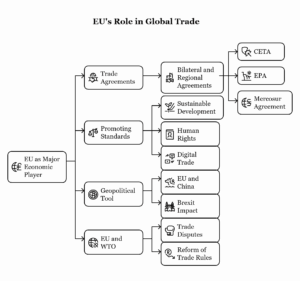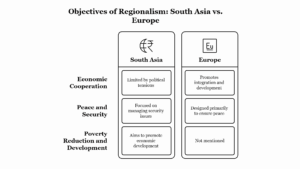Federalism is a system of governance where power is divided between a central (national) government and regional (provincial or state) governments. In Canada, federalism is a fundamental feature of the political system, reflecting the diversity of its geography, languages, and cultures. The Canadian model of federalism is unique in several respects, rooted in its history, the constitutional framework, and the interplay between federal and provincial powers.
1. Historical Context of Canadian Federalism:
The origins of Canadian federalism can be traced back to the British North America Act of 1867, later renamed the Constitution Act, 1867, which united the original provinces of Ontario, Quebec, New Brunswick, and Nova Scotia into a federal union known as the Dominion of Canada. This union was crafted to accommodate the diverse linguistic and cultural realities of the French-speaking province of Quebec and the English-speaking provinces. The design of Canada’s federal system sought to balance the demands for unity with the protection of regional autonomy.
The decision to adopt a federal system was also influenced by the vast geographic expanse of the country and the desire to maintain local governance structures that could address specific regional issues. The historical context of Canada’s federalism reveals a clear intention to avoid the centralized nature of the British colonial system and instead offer a decentralized model that respects regional identities.
2. Constitutional Framework and Division of Powers:
The Constitution Act, 1867, outlines the division of powers between the federal and provincial governments. It specifies the areas of responsibility that fall within the exclusive jurisdiction of the federal government, such as national defense, foreign affairs, immigration, and trade. Conversely, provinces have jurisdiction over matters like education, healthcare, natural resources, and civil rights within their territories.
One of the key characteristics of Canadian federalism is the enumerated powers system, where the Constitution explicitly lists the powers of the federal government (Section 91) and those of the provincial governments (Section 92). This clear delineation helps maintain a balance of power but has also led to frequent debates and conflicts regarding the interpretation of these powers.
Over time, the Notwithstanding Clause (Section 33) of the Canadian Charter of Rights and Freedoms, added in 1982, has allowed provinces to pass laws that may override certain federal laws, reflecting the flexibility within Canada’s federal framework.
3. Flexibility and Evolving Nature of Federalism:
Canadian federalism is characterized by a degree of flexibility that has allowed it to evolve in response to changing political, social, and economic circumstances. The relationship between the federal and provincial governments is dynamic, shaped by judicial interpretation, political negotiation, and changing societal values. For example, while provinces have significant autonomy, the federal government has, at times, intervened in areas traditionally within provincial jurisdiction. This has happened, for example, with the expansion of federal power over issues like healthcare, education, and environmental policy.
Additionally, the amendment process in Canadian federalism allows the Constitution to be modified in response to new challenges. For instance, the 1982 patriation of the Canadian Constitution, which included the Canadian Charter of Rights and Freedoms, provided new constitutional guarantees that affect both federal and provincial laws. This amendment process, however, requires the agreement of both federal and provincial governments, highlighting the cooperative nature of Canadian federalism.
4. Regionalism and the Quebec Question:
One of the defining characteristics of Canadian federalism is the prominence of regionalism, particularly the role of Quebec. Quebec has a unique position within the Canadian federation due to its French-speaking population, distinct cultural identity, and historical roots in French colonialism. The Quebec Question refers to the ongoing political debate over Quebec’s status within Canada, which has led to calls for greater autonomy, and even independence, for the province.
Federalism has played a key role in addressing these demands. Through mechanisms such as constitutional negotiations (notably the 1980 and 1995 referenda on Quebec’s independence) and language laws like the Official Languages Act, Canada’s federal system has sought to balance the desire for unity with the recognition of Quebec’s unique status. The creation of the distinct society clause in the failed Meech Lake Accord (1987) and subsequent political discussions reflect the ongoing negotiation over Quebec’s place within Canada’s federal structure.
5. Intergovernmental Relations:
Another characteristic of Canadian federalism is the close relationship between the federal and provincial governments, which often work together to address common issues. However, the relationship is not without tension. Intergovernmental relations in Canada are influenced by political, economic, and regional factors, with provincial premiers frequently asserting their autonomy from the federal government.
The process of negotiation, known as federal-provincial-territorial cooperation, has led to the creation of various institutions such as the Council of the Federation, where provincial premiers meet to discuss issues of mutual concern. This cooperation is essential for addressing national challenges such as healthcare reform, environmental policy, and economic development. However, tensions can arise, particularly when provinces feel that federal policies encroach on their jurisdiction.
6. Indigenous Peoples and Federalism:
Another evolving aspect of Canadian federalism is the relationship between the federal government and Indigenous peoples. Historically, Indigenous peoples in Canada were largely excluded from the federal framework. However, in recent decades, there has been a growing recognition of Indigenous rights within the federal system, culminating in the Constitution Act, 1982, which recognized Aboriginal rights.
This recognition has led to significant legal and political developments, such as the recognition of self-government agreements and the creation of the Aboriginal self-government framework. The federal government has worked with Indigenous groups to address issues such as land rights, cultural preservation, and economic development, which represent key aspects of the ongoing evolution of Canadian federalism.
Conclusion:
In conclusion, Canadian federalism is characterized by a distinctive balance of power between the federal and provincial governments, with a high degree of flexibility to accommodate regional identities and evolving political dynamics. While it has successfully managed the diverse linguistic, cultural, and regional characteristics of the country, it also faces challenges, particularly in balancing the demands of provinces like Quebec and addressing Indigenous rights. Canadian federalism remains a key component of the country’s political identity, allowing for cooperation, negotiation, and adaptation in the face of changing circumstances.







Leave a Reply